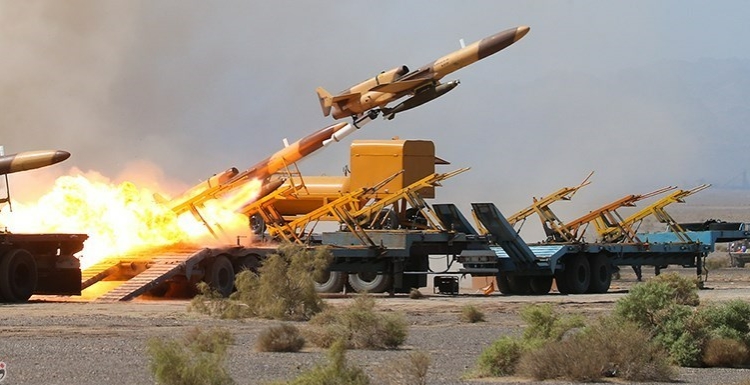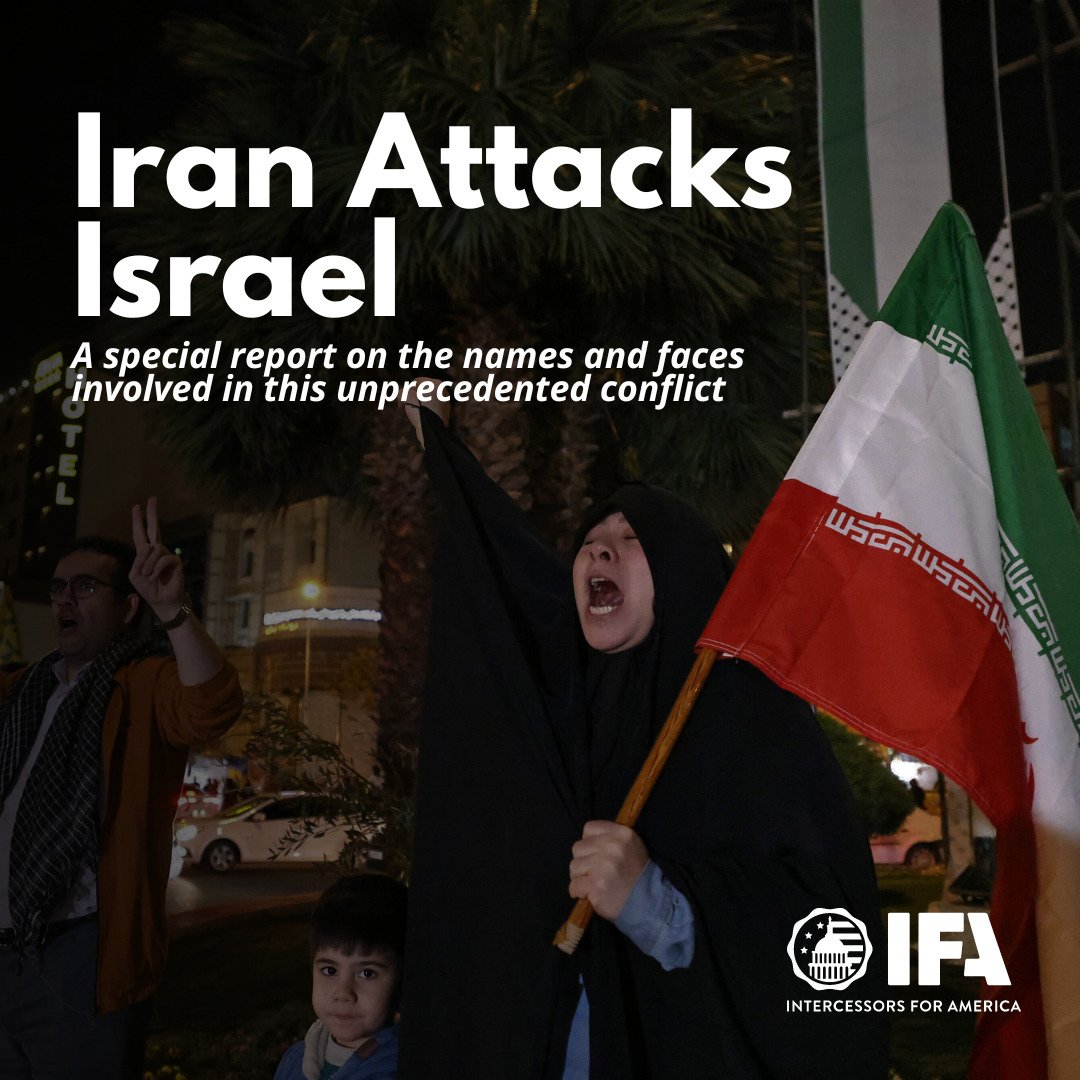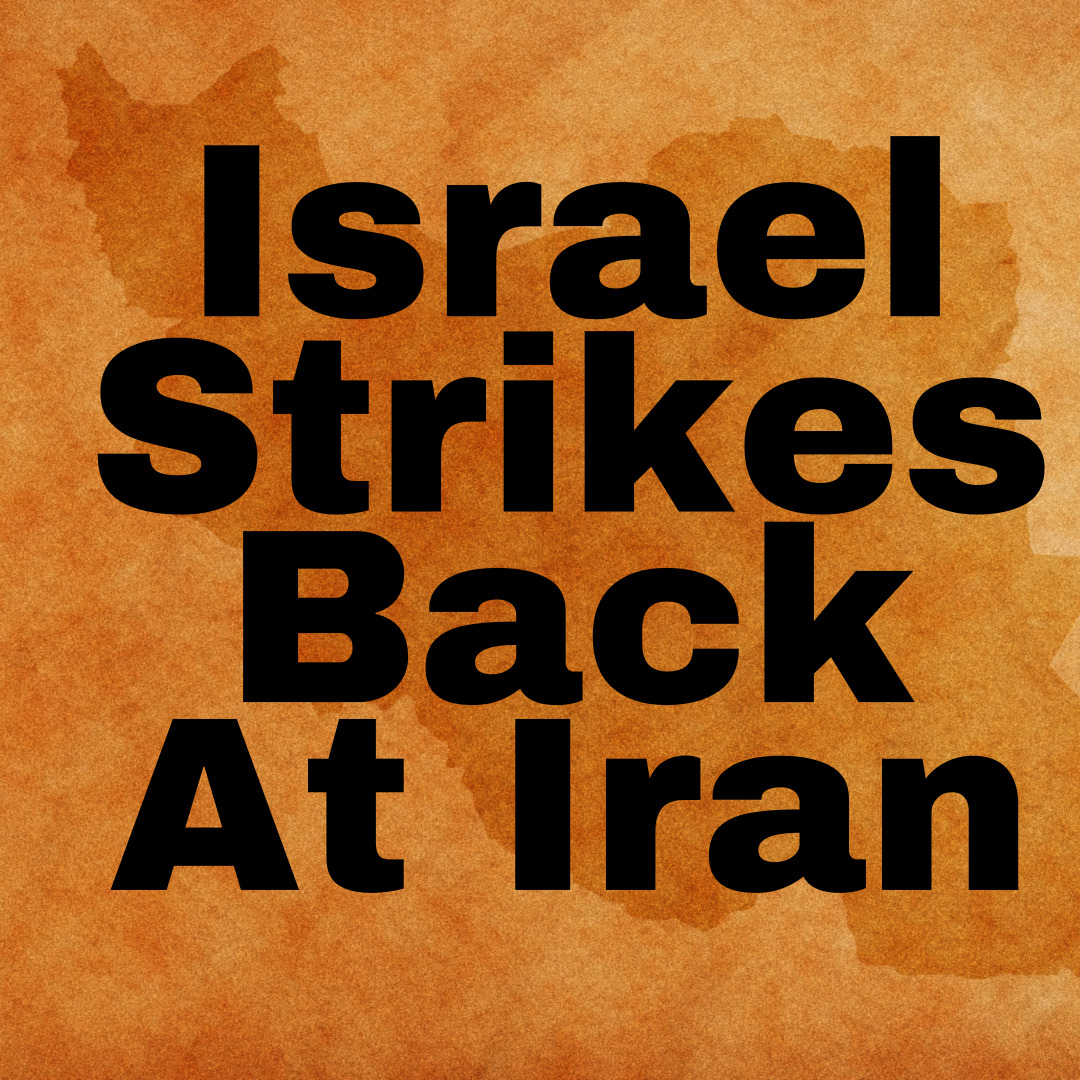DEBUNKED: FIVE MYTHS IN THE MEDIA ABOUT TRUMP’S IRAN DEAL WITHDRAWAL
YEMENI ARMED DRONE ATTACK AGAINST SAUDI OIL PIPELINE
PROPHETIC WORD – THIS IS YOUR SECOND WIND!
PRESIDENT TRUMP PROPOSES IMMIGRATION REFORM
ALABAMA ABORTION LAW: IS ROE V. WADE “GONE”?
DEBUNKED: FIVE MYTHS IN THE MEDIA ABOUT TRUMP’S IRAN DEAL WITHDRAWAL
May 8, 2019 marked the one-year anniversary of one of President Trump’s most important foreign policy decisions – withdrawing from the 2015 nuclear deal with Iran, the JCPOA. This was a controversial decision that was condemned by the usual mainstream foreign policy and press naysayers who predicted it would start a war, be ignored by European states and isolate the United States.
None of this happened. A year later it is clear that President Trump’s decision to withdraw from the JCPOA was the right call. However, the mainstream media and foreign policy establishment refuse to admit this and are instead promoting five myths to make the case that this was the wrong decision. None of these myths stand up to scrutiny.
Myth 1: The JCPOA is a good agreement.
Contrary to President Trump’s statement that the JCPOA is the worst deal ever negotiated, its backers insist the agreement was a diplomatic success based on reasonable compromises with Iran that significantly reduced the threat from its nuclear program.
There is strong and growing evidence to the contrary.
Let’s start by reviewing what President Obama promised the American people would be in a nuclear deal with Iran negotiated by his administration.
When campaigning for president in 2007, Mr. Obama told an America Israel Public Affairs Committee conference: “The world must work to stop Iran’s uranium-enrichment program.” President Obama went further during an October 2012 presidential debate with Mitt Romney when he said: “… Our goal is to get Iran to recognize it needs to give up its nuclear program and abide by the U.N. resolutions that have been in place. … But the deal we’ll accept is — they end their nuclear program. It’s very straightforward.”
These statements by the former president could have been the basis of an excellent nuclear agreement to address regional and global concerns about Iran’s covert nuclear weapons program. Unfortunately, after Iran refused to agree to these terms, the Obama administration pursued a much weaker agreement based on a series of ill-advised and dangerous concessions to Tehran.
The most dangerous concession was abandoning Obama’s promise to require Iran to cease enriching uranium, a process that can be used to make uranium fuel for both power reactors and nuclear weapons. Instead, the JCPOA concedes to Iran the “right” to enrich uranium and allows it to operate 5,000 centrifuge machines and develop more advanced centrifuges while the agreement is in effect.
Under the nuclear agreement, Iran agreed to disable an under-construction heavy-water reactor (a source of plutonium) which JCPOA parties agreed to replace with a redesigned reactor that would produce less plutonium. Plutonium poses major nuclear proliferation concerns because it can be used as a lighter and more powerful nuclear bomb fuel than enriched uranium. The decisions by JCPOA parties to not only let Iran have a heavy-water reactor, but to build one for Iran and teach it how to operate such a reactor are among the JCPOA’s worst and most dangerous concessions to Tehran. Moreover, according to a February 2019 Institute for Science and International Security report, there are indications that Iran did not fully disable this reactor as required and may have taken steps to alter its design so it will produce larger amounts of plutonium.
The JCPOA has other major flaws. It has weak enforcement provisions (more about this later) and excludes Iran’s missile program, its sponsorship of terrorism and Iranian meddling in Middle East conflicts.
The agreement also has a short duration. Under the JCPOA’s “sunset clauses” its provisions begin to expire in 2025.
And then there are the huge financial benefits Iran gained from the JCPOA. Not only did Tehran receive $150 billion in sanctions relief, a web of tough multinational sanctions against Iran – including EU financial and oil sanctions – were ended and will be difficult to fully reimpose. Iran also received $1.7 billion in cash secretly flown to Tehran. While Obama officials insisted these planeloads of cash were sent to pay an old U.S. debt to Iran, it is clear this payment was actually ransom to free innocent U.S. citizens imprisoned in Iran.
The JCPOA also failed to meet one of President Obama’s chief goals for the agreement: bringing Iran into the community of nations and ending its belligerent behavior. Instead, Iran’s behavior significantly worsened after the JCPOA was agreed to when it sent troops into Syria, arms to the Houthi rebels in Yemen, and increased spending on terrorism, the military and its missile program. In response to Iranian assassination squads operating in Europe to kill Iranian dissidents, the European Union imposed sanctions on Iran in January 2019, the first EU sanctions since the JCPOA was implemented.
Many critics of the Obama administration believe Obama officials made so many risky concessions to negotiate the JCPOA because they were desperate to get a “legacy” nuclear deal for President Obama. By agreeing to such a weak and lopsided agreement, the Obama administration emboldened Iran to step up its belligerent activity, failed to halt Iran’s nuclear program and undermined American credibility on the world stage.
Myth 2: President Trump’s withdrawal from the JCPOA was illegal and immoral because the agreement is legally binding.
JCPOA supporters could credibly argue the nuclear agreement was legally and morally binding on the United States if Obama officials had followed the U.S, Constitution and submitted this agreement for ratification as a treaty by the U.S. Senate. While the Iranian parliament was permitted to ratify the JCPOA, Obama officials refused to submit it for Senate ratification because this deal was deeply unpopular with the American people and opposed by a majority in both houses of Congress.
Instead, on July 20, 2015 – five days after the JCPOA was agreed to – the Obama administration engineered a “binding” UN Security Council resolution that endorsed the nuclear deal so it could argue the agreement was binding on future presidents. Senate and House opponents of the JCPOA were given an opportunity to kill the JCPOA in September 2015 through the Corker-Cardin Act, but were required to get filibuster-proof and veto-proof majorities AGAINST the deal, a process that National Review’s Andrew McCarthy called “a constitutional perversion.”
That is not how the U.S. system of government works. The ratification of treaties requires a 2/3 vote in favor by the U.S. Senate. A U.S. president can’t do an end-run around the Constitution to impose a treaty on his successors by going to the United Nations because, as Ambassador John Bolton once said, “the U.S. Constitution trumps the UN Charter.” The fact is, the JCPOA is an executive agreement signed by President Obama that in no way binds his successors. There therefore was nothing to stop President Trump from rejecting this executive agreement with the stroke of his pen.
Myth 3: The U.S. should not have withdrawn from the JCPOA because Iran was complying. We know this because the IAEA and the US Intelligence Community said so.
There is strong evidence Iran has violated the JCPOA from the beginning of the agreement even though IAEA and U.S. intelligence officials refuse to acknowledge this.
Iran’s refusal to allow IAEA inspections of military sites is a clear violation of the JCPOA. If covert nuclear weapons work is being conducted in Iran, it is taking place at military sites. Although the IAEA could ask to inspect Iranian military facilities, it won’t do so because Tehran would refuse, which would force the IAEA to declare Iran in noncompliance with the JCPOA. This reluctance of the IAEA to conduct full inspections in Iran could be called a “don’t ask, don’t inspect” policy.
There was one exception to Iran’s refusal to allow IAEA inspections of military sites, the Parchin military base, which was inspected in September 2015. However, Iran insisted this site be inspected by Iranians and tightly restricted what they could inspect to a single building that was sanitized to remove incriminating evidence. Nevertheless, samples collected by this inspection proved that nuclear weapons work had been conducted at this site that Iran tried to hide.
The Parchin inspection was in response to paragraph 14 of the JCPOA which required Iran to fully cooperate with an ongoing IAEA investigation of the “Possible Military Dimensions” (PMD) of its nuclear program before Tehran would be granted full sanctions relief in January 2016. A December 2, 2015 IAEA report indicated that Iran failed to fully cooperate with this investigation, making it impossible for the Agency to explain Iran’s nuclear activities and assess with certainty that possible nuclear weapons-related activities had ceased. However, led by the United States, IAEA members decided to ignore these issues and voted on December 15, 2015 to close the file on Iran’s PMD issues.
We learned last year from a trove of Iranian nuclear documents stolen by Israeli intelligence – a.k.a. the Iranian Nuclear Archive – how far Iran’s nuclear program had progressed and the extent of its deception during the IAEA’s 2015 PMD investigation. This included:
— A plan to manufacture five nuclear warheads at 10 kilotons each.
— A plan to conduct an underground nuclear test.
— An attempt to acquire highly-enriched uranium (weapons-grade) from abroad.
The nuclear archive documents also provided details of multiple buildings at the Parchin base where work to develop nuclear weapons was conducted.
Israel learned from the Iranian nuclear archive about the existence of a secret atomic warehouse in Tehran that may have contained 300 tons of equipment and 15 kilograms of radioactive material. Israeli officials told the IAEA about this discovery in the spring of 2018 and urged the Agency to inspect it. However, probably due to its “don’t ask, don’t inspect” policy, the IAEA failed to inspect this warehouse until April 2019, long after it had been emptied.
There has been other compelling evidence of Iranian cheating on the JCPOA, including several reports by German intelligence agencies on covert efforts by Iran to acquire nuclear equipment and materials in violation of the nuclear agreement.
If there is strong evidence that Iran has been violating the JCPOA, why do the IAEA and the U.S. Intelligence Community claim otherwise? One reason may be that they prefer to side on this issue with the liberal foreign policy establishment and European leaders rather than American conservatives like President Donald Trump and Ambassador John Bolton. Another reason could be that while these organizations privately believe the JCPOA is flawed, they feel it is better than nothing. Regardless of the actual reasons, IAEA and U.S. intelligence officials have misled the American people and the world on Iranian compliance with the nuclear deal.
Myth 4: The United States should have stayed in JCPOA and fixed it.
This is a popular myth about the JCPOA that some conservatives have fallen for which revolves around the fallacy that minor modifications to the nuclear deal – notably removing or extending its “sunset clauses” – could fix the agreement.
The are many problems with the “fixer” approach, the most important of which is that the agreement cannot be fixed without major changes that Iran will never agree to, such as barring uranium enrichment and heavy-water reactors, including Iran’s missile program, implementing tougher inspections that allow the IAEA to inspect Iranian military sites, and resolving unanswered PMD questions.
The fixers ignored the need for major revisions and instead focused on a less urgent issue – the short duration of the JCPOA due to its sunset clauses under which most provisions expire between 2025 and 2030. The problem with this approach is that by only altering the sunset clauses, such fixes would extend or make permanent this dangerously flawed agreement.
Before President Trump made his decision in May 2019 to withdraw from the JCPOA, members of Congress and American and European diplomats had 16 months to devise a plan of revisions to convince President Trump to not exit the nuclear deal. They failed because they were unable to reach an agreement. And even if they had, Iran was dead set against any changes to the JCPOA.
Myth 5: President Trump’s withdrawal from the JCPOA would be ineffective and could cause a war.
As stated earlier, President Trump’s decision to withdraw from the nuclear deal and his “maximum pressure” campaign against Iran has resulted in a successful Iran policy.
The predictions of war with Iran if the U.S. withdrew from the nuclear accord have proved to be groundless fearmongering by the Left. This is still the case today despite a recent deployment of U.S. warships and bombers to the Middle East as a show of force in response to intelligence indicating that Iran may be considering acts of terrorism against U.S. or allied targets in the Middle East. While this deployment does not indicate President Trump plans to go to war with Iran, it is another sign that Iran deserves the U.S. State Department’s designation as the world’s leading state-sponsor of terrorism.
Iran also threatened last week to retaliate for the U.S. withdrawal from the JCPOA by withdrawing from parts of the agreement by ending limits on uranium enrichment and sales of heavy water. These threats are absurd because the Iranian president threating to withdraw from a weak nuclear agreement that Iran is already cheating on.
Meanwhile, European multinationals are honoring re-imposed U.S. sanctions and are leaving Iran in droves, including Air France, British Airways, KLM, Total, Siemens, and Volkswagen. New U.S. sanctions have isolated Iran and deprived its ruling mullahs of funds to spend on the military, terrorism and meddling in regional disputes.
The Trump administration’s Iran sanctions have caused Iran’s oil exports to drop to about 1.3 million barrels a day, down from 2.8 million before the U.S. left the JCPOA. Iran’s oil exports probably will drop much further due to the Trump administration recent decision to end all exemptions to U.S. oil sanctions. Iran’s economy is expected to shrink by 6 percent in 2019 after negative 3.9 percent growth in 2018. 2019 inflation could reach 50 percent.
At the same time, President Trump remains open to dialogue with Iranian leaders just like he was open to talks with North Korean leader Kim Jong Un. Secretary Pompeo announced a list of 12 U.S. requirements for a new agreement with Iran on nuclear and regional issues in a May 2018 speech at the Heritage Foundation. So far, Iranian officials have shown no interest in dialogue with the U.S. and are sticking to hostile rhetoric to divide and threaten America.
While a new agreement that addresses the full range of threats from Iran is not on the horizon, President Trump’s withdrawal from the JCPOA and his maximum pressure policy have yielded many important achievements, including strengthening America’s relationships with Israel and the Gulf states and repairing the damage done to these relationships by the Obama administration’s pro-Iran, leading-from-behind Middle East policy.
President Trump’s Iran policy has also reversed significant erosion during the Obama administration of longstanding U.S. policies to stop the proliferation of nuclear weapons and ballistic missiles worldwide.
The decision to withdraw from the JCPOA was a difficult one because the mainstream media, former Obama officials and the foreign policy establishment have vociferously promoted so many myths about this agreement and the alleged dangers of the U.S. withdrawing from it. Some Republicans, including former members of President Trump’s cabinet, fell for these myths.
President Trump did not. As an outsider who instinctively questions conventional wisdom, Mr. Trump instead looked at the facts and listened to a wide range of critics of the nuclear deal, including Mike Pompeo and John Bolton. This led to what may be the most important foreign policy decision of the Trump presidency that has significantly improved regional and international security and helped restore American credibility in the Middle East and around the world.
(Reprinted with permission from The Center for Security Policy, article by Fred Fleitz)
Partner with Us
Intercessors for America is the trusted resource for millions of people across the United States committed to praying for our nation. If you have benefited from IFA's resources and community, please consider joining us as a monthly support partner. As a 501(c)3 organization, it's through your support that all this possible.






Comments
No comments have been posted yet; you can be the first!